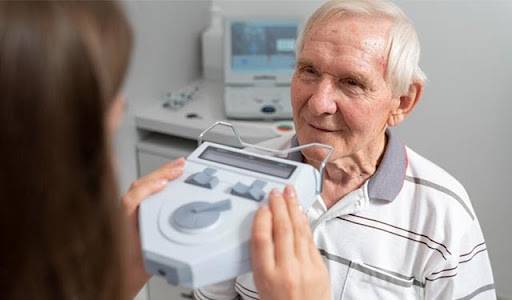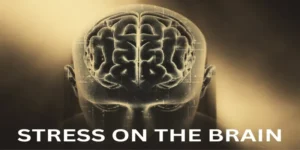Introduction
EMDR (Eye Movement Desensitization and Reprocessing) is a part of the psychotherapy approach for treating Post-Traumatic Stress Disorder (PTSD) and other related issues.
In this approach, you revisit distressing or traumatic situations for short durations while the therapist monitors your eye movement. In short, this process allows the patient to go back to the incident and permits the brain to heal in a natural and safe measured way to responsive resolving.
Our Wellness Programs
Looking for services related to this subject? Get in touch with these experts today!!
Experts

Kirti Bajpai

India
Psychologist
Experience: 5 years

Mansi Chawla

India
Psychologist
Experience: 12 years

Sapna Zarwal

India
Psychologist
Experience: 19 years

Tulika Chandra

India
Psychologist
Experience: 10 years
What Is PTSD?
Individuals who have encountered, experienced or witnessed a horrific incident like natural catastrophes, severe accidents, military conflict, assault, torture, or grievous threats may develop post-traumatic stress disorder (PTSD).
PTSD is a long-term effect of distressing memories that culminate in overwhelming fear, terror, and sometimes, even paralysis. The majority of people who experience these horrific events suffer from:
1. Shock
2. Rage
3. Anxiousness
4. Dread
5. Regret
However, these emotions can persist and even intensify in people with PTSD. These are so intense that they prevent them from going about their daily lives as they ought to.
If a doctor diagnoses someone with PTSD, they will most likely recommend therapy, medication, or a mix of two.
The History of EMDR
Eye Movement Desensitization and Reprocessing (EMDR) therapy arose from direct practical findings rather than a specific theoretical approach.
Francine Shapiro, the one who discovered EMDR, noticed that the movement of her eyes seemed to minimise the adverse feeling connected with her unpleasant recollections while strolling in a playground in 1987.
She hypothesised that eyes had a systematic desensitisation impact. When she investigated this theory, she discovered that many others had the same claim that the technique of EMDR is helpful.
Other methodologies and speculations also obviously influenced the development of EMDR therapy and its conceptual foundation over four significant durations:
(a) from the movement of the eye to
(b) a beginning procedure (EMD) to
(c) a guideline (EMDR) for treating a specific condition (post-traumatic stress disorder), and
(d) a holistic strategy to treatment.
Who Can Benefit from EMDR?
EMDR is a critical method when it comes to healing. It involves revisiting the trauma and repeating the process until it becomes less distressing. This technique has helped several people with PTSD.
The reported procedure has also been beneficial to persons suffering from:
1. Anxiety
2. Body dysmorphic disorders
3. Panic attacks
4. Performance anxiety
This process is more than just a theoretical framework. It is also a practical grassroots level effort that has assisted individuals in forgetting a traumatic series of events they had experienced previously.
It is more helpful in treating long-lasting symptoms from a traumatic event. EMDR helps people deal with depression, stress, phobias, loss, separation, harassment, violence, and similar life events.
How Exactly Does EMDR Help with PTSD?
- EMDR is highly effective in the case of PTSD. It works by modelling the way the brain stores memories. EMDR allows a person with PTSD to focus on the memory and process it to remove negative emotions and ensure acceptance in a safe environment. It focuses on the trauma and brings the person in touch with their associated sensations, emotions, and feelings. The focus is to make a person relive and process the memories such that it doesn’t cause distress anymore.
- A person with PTSD visits disturbing or upsetting situations in short amounts throughout EMDR therapy sessions while the psychotherapist controls the movement of the eyes.
- Since reliving painful events is often less emotionally taxing and upsetting when someone redirects your concentration, EMDR is beneficial for treating PTSD.
- A psychotherapist will motion with their fingertips before the person’s eyes and tell them to follow the hand gestures with their eyes. Simultaneously, the EMDR therapist will ask them to think of and revisit a difficult time, which will incorporate the associated emotions and bodily feelings. They will progressively assist the patient in shifting their thoughts to more pleasurable ones.
- Psychotherapists who use EMDR to treat PTSD have claimed that the technique can reduce the impact of fear and anxiety. The therapist asks the person to evaluate overall emotional anguish before and after each EMDR session. With time, the troubling recollections can become less incapacitating.
How Does EMDR Work?
- The person focuses on a troublesome experience and recognises their perception of this unpleasant experience during the Rapid Eye Movement phase. The person then establishes a reasonable opinion about themselves that they would like to have.
- Next, the person recalls the experience while concentrating on an external stimulation that causes bilateral side-to-side eye movement, which the therapist usually does by moving a finger from side to side.
- The respondent must say how they feel after every round of bilateral motions. The therapist will repeat the process with them until the recall is no longer troublesome. Clients tend to ‘process’ the memories to lead to a peaceful settlement through this technique.
- Combining memory concentration with eye movements or sounds allows one’s brain to manage the memories appropriately. It also transforms the way their mind perceive things.
What Are the Phases of EMDR?
EMDR is a treatment process with eight stages:
- Assessing the client’s traumatic incident and developing a treatment plan: The therapist examines the client’s traumatic event and then creates a treatment plan based on that assessment.
- Readiness: The therapist ensures that the client feels prepared enough to deal with emotional suffering. The psychologist will discuss EMDR therapy. This stage also strengthens the bond between the therapist and the client.
- Assessment: The therapist enters the negative feelings associated with the traumatic events at this stage. To deal with stress, therapists teach several stress reduction techniques.
- Desensitisation: The client will move their eyes while concentrating on their memories.
- Change of belief: This is where they will turn their negative thoughts into positive ones.
- Emotional scan: The person will then examine if they felt the same way before.
- Closure: The client should keep a weekly journal to document self-care and calming activities.
- Reassessment: The therapist monitors the client’s current mental state, the results of earlier treatments, and the appearance of new ideas.
EMDR is a psychological procedure that allows people who have experienced significant traumatic situations to heal naturally and remains highly effective for PTSD. Following effective EMDR therapy treatment, Patients will experience physiological closure, lessened suffering, and the capacity to restate harmful beliefs. To understand more about EMDR, contact a professional from UnitedWeCare today.



















Comments are closed.